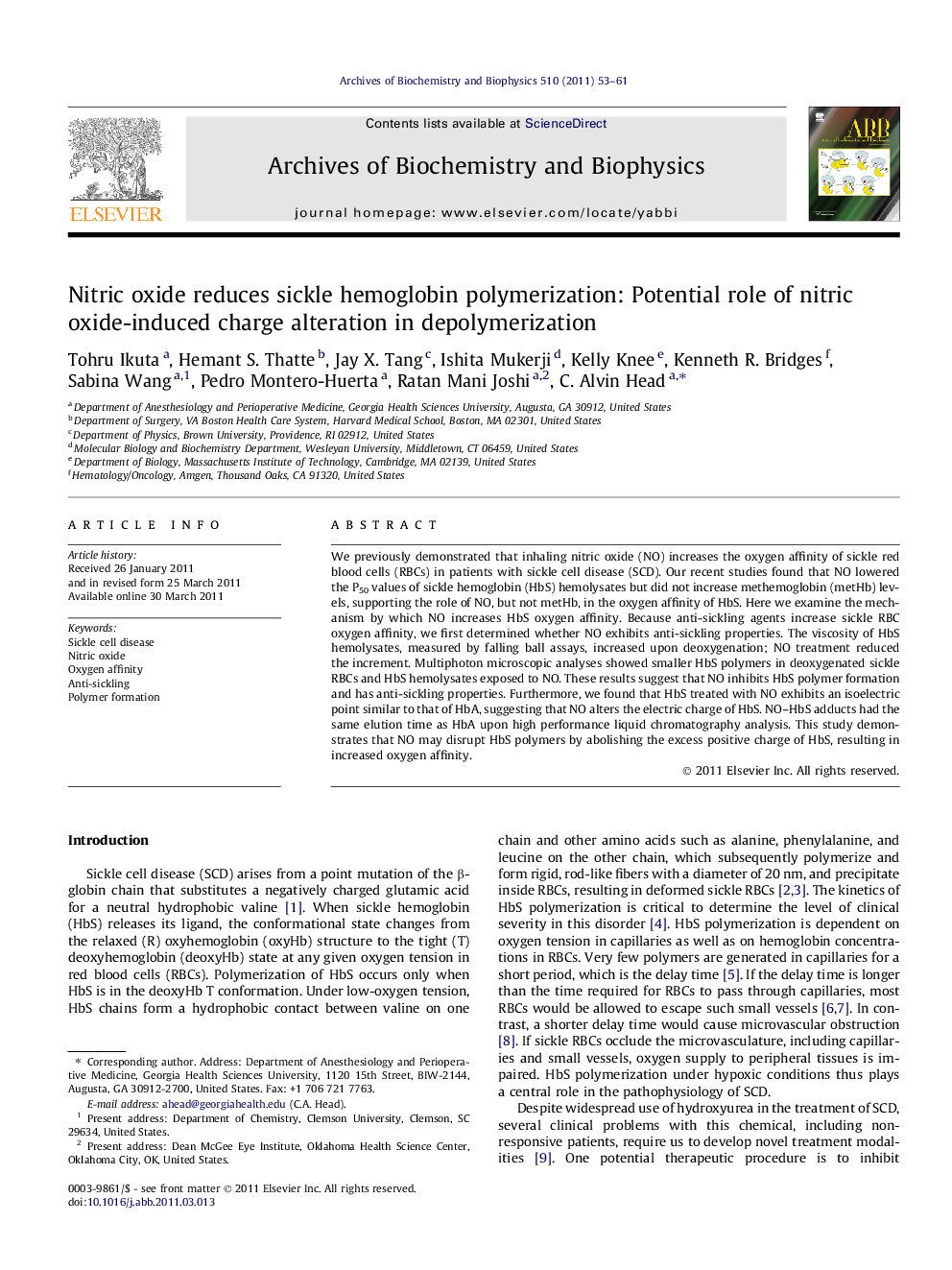| Article ID | Journal | Published Year | Pages | File Type |
|---|---|---|---|---|
| 1925746 | Archives of Biochemistry and Biophysics | 2011 | 9 Pages |
We previously demonstrated that inhaling nitric oxide (NO) increases the oxygen affinity of sickle red blood cells (RBCs) in patients with sickle cell disease (SCD). Our recent studies found that NO lowered the P50 values of sickle hemoglobin (HbS) hemolysates but did not increase methemoglobin (metHb) levels, supporting the role of NO, but not metHb, in the oxygen affinity of HbS. Here we examine the mechanism by which NO increases HbS oxygen affinity. Because anti-sickling agents increase sickle RBC oxygen affinity, we first determined whether NO exhibits anti-sickling properties. The viscosity of HbS hemolysates, measured by falling ball assays, increased upon deoxygenation; NO treatment reduced the increment. Multiphoton microscopic analyses showed smaller HbS polymers in deoxygenated sickle RBCs and HbS hemolysates exposed to NO. These results suggest that NO inhibits HbS polymer formation and has anti-sickling properties. Furthermore, we found that HbS treated with NO exhibits an isoelectric point similar to that of HbA, suggesting that NO alters the electric charge of HbS. NO–HbS adducts had the same elution time as HbA upon high performance liquid chromatography analysis. This study demonstrates that NO may disrupt HbS polymers by abolishing the excess positive charge of HbS, resulting in increased oxygen affinity.
► Nitric oxide exposure increases the oxygen affinity of sickle hemoglobin hemolysates. ► Nitric oxide reduces the viscosity of sickle hemoglobin hemolysates. ► Nitric oxide reduces sickle hemoglobin polymerization. ► Nitric oxide alters the electric charge of sickle hemoglobin.
